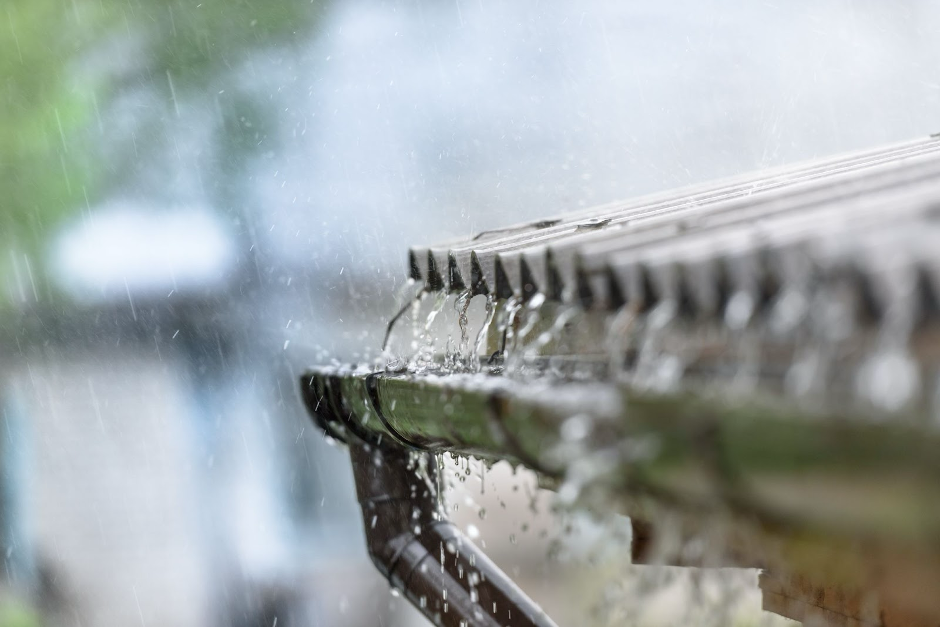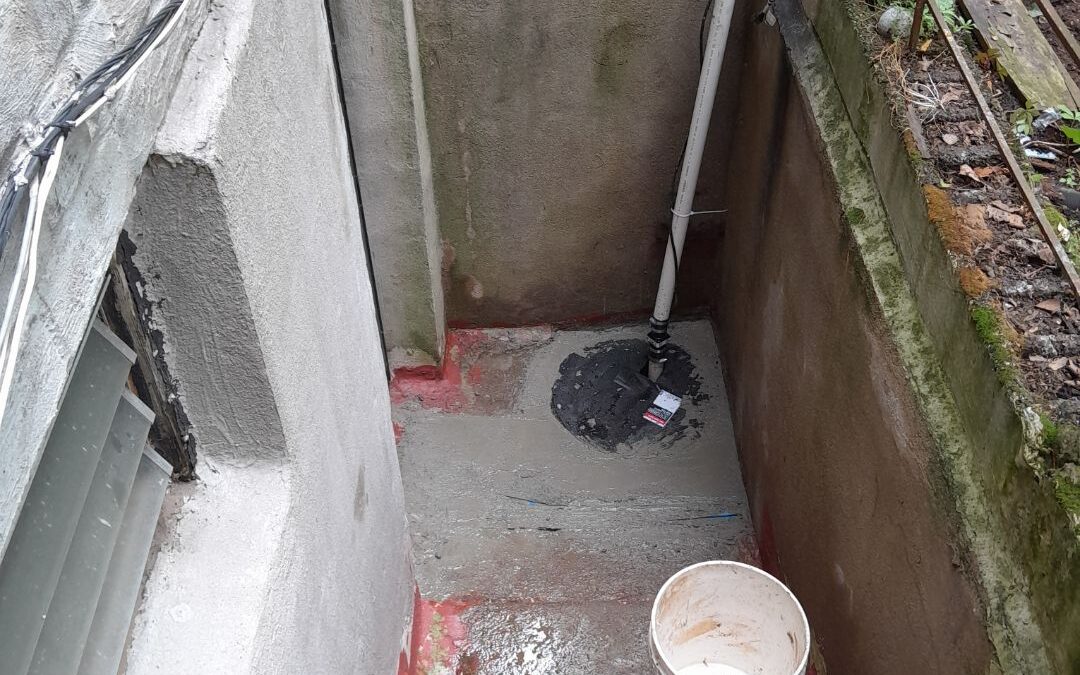Effective rainwater management is crucial for maintaining the integrity of your home’s foundation. When rainwater is not properly managed, it can lead to serious issues such as erosion, cracks, and water seepage, which can compromise the stability and safety of your foundation. This blog will explore various techniques to effectively manage rainwater, ensuring that your foundation remains strong and protected. By implementing these strategies, you can prevent costly damage and maintain the long-term health of your home.
So, let’s get started!

Understanding the Importance of Rainwater Management
Rainwater management is essential for maintaining the stability of your foundation. When rainwater accumulates around your home, it can exert pressure on the foundation walls, leading to potential structural damage. This water pressure can cause cracks, which may widen over time, allowing water to seep into your basement or crawl space. Inadequate rainwater management can also result in soil erosion, weakening the support for your foundation and causing it to settle unevenly.
Common problems caused by poor rainwater management include:
- Erosion: Water runoff can wash away soil, undermining the foundation’s stability.
- Cracks: Excessive moisture can lead to cracks in the foundation, walls, and floors.
- Water Seepage: Persistent water accumulation can seep through foundation walls, causing dampness and mold growth.
Proactive measures are vital in preventing these issues. By managing rainwater effectively, you can protect your foundation from damage, ensuring the safety and longevity of your home.
Assessing Your Current Rainwater Management System
To ensure your rainwater management system is effective, it is essential to conduct regular inspections and evaluations.
Here are key areas to focus on:
Inspecting Gutters and Downspouts
- Clean Gutters: Ensure gutters are free from leaves, debris, and any blockages that could impede water flow.
- Check for Leaks: Inspect gutters and downspouts for any leaks or damage that might prevent them from directing water properly.
- Proper Attachment: Make sure gutters are securely attached and sloped correctly to facilitate water flow.
Evaluating the Grading Around Your Home
- Proper Slope: The ground around your home should slope away from the foundation to prevent water from pooling near it.
- Adjust Landscaping: If necessary, adjust your landscaping to ensure proper drainage away from the foundation.
Checking for Signs of Water Damage or Erosion
- Foundation Inspection: Look for cracks or signs of water seepage in your foundation walls and floors.
- Soil Condition: Examine the soil around your home for signs of erosion or uneven settling, which may indicate drainage issues.
- Interior Signs: Inside your home, check for dampness, mold, or musty odors that could indicate water intrusion.
By thoroughly assessing these areas, you can identify potential problems and take corrective action to ensure your rainwater management system effectively protects your foundation.
Zavza Seal Offers Free Foundation Inspections to All of Nassau and Suffolk Counties! Got a Leaky Basement? A Musty Crawl Space? We Provide Solutions for Water Damage Prevention Backed by an Industry-Leading 30-Year Warranty!
Call (631) 980-1800 Now!
Key Rainwater Management Techniques: Proper Gutter and Downspout Maintenance
Clean gutters are essential for directing rainwater away from your home. When gutters are clogged with leaves, debris, or dirt, they can overflow, causing water to spill over the sides and pool around the foundation. This can lead to erosion and water seepage, compromising your foundation’s stability.
Correct Installation and Regular Maintenance Tips
Proper gutter installation ensures effective rainwater management. Gutters should be securely attached and sloped correctly to facilitate water flow toward the downspouts. Regular maintenance includes:
- Cleaning: Remove debris from gutters at least twice a year, or more often if you have overhanging trees.
- Inspection: Check for leaks, rust, and loose fasteners, repairing any damage promptly.
- Gutter Guards: Consider installing gutter guards to reduce the frequency of cleaning.
Ensuring Downspouts Direct Water Away from the Foundation
Downspouts play a crucial role in diverting water away from your home. Ensure that downspouts:
- Extend at least 3-4 feet away from the foundation.
- Have splash blocks or extenders to disperse water and prevent soil erosion.
- Are angled correctly to direct water flow away from the foundation.
Grading and Landscaping Solutions: Ensuring Proper Slope Away from the Foundation
Proper grading involves creating a slope that directs water away from your home’s foundation. Ideally, the ground should slope at least 6 inches over the first 10 feet away from the foundation. This helps prevent water from pooling and seeping into the foundation.
Benefits of Swales and Berms in Landscaping
Swales and berms are effective landscaping techniques for managing rainwater:
- Swales: Shallow, wide ditches that direct runoff to a safe drainage area.
- Berms: Raised areas of soil that block and redirect water flow.
These features can help control water runoff, reducing the risk of erosion and water damage.
Using Native Plants for Improved Water Absorption
Incorporating native plants into your landscaping can enhance rainwater management. Native plants typically have deep root systems that improve soil stability and water absorption. They also require less maintenance and are better adapted to local climate conditions.
Installing French Drains: Overview of French Drains and Their Function
French drains are trench systems filled with gravel or rock and a perforated pipe that redirects surface water and groundwater away from the foundation. They are effective in preventing water accumulation and protecting the foundation from water damage.
Step-by-Step Guide to Installation
- Plan the Drain Location: Identify the areas where water collects and determine the best path for the drain.
- Dig the Trench: Dig a trench that slopes downward, away from the house, about 12-24 inches deep and 6 inches wide.
- Add Gravel and Pipe: Place a layer of gravel at the bottom, then lay the perforated pipe, and cover it with more gravel.
- Cover and Finish: Cover the trench with landscape fabric to prevent soil from clogging the drain, then fill the trench with soil and sod.
Benefits of French Drains in Protecting Foundations
French drains effectively prevent water from pooling around the foundation, reducing hydrostatic pressure and the risk of water seepage. This helps maintain the integrity of the foundation and prevents long-term damage.
Sump Pumps and Drainage Systems: Role of Sump Pumps in Water Management
Sump pumps are crucial for removing accumulated water from basements and crawl spaces. They collect water in a sump basin and pump it away from the house, preventing flooding and water damage.
Installing and Maintaining Sump Pumps
- Installation: Install the sump pump in the lowest part of the basement or crawl space. Ensure the pump is connected to a discharge pipe that directs water away from the foundation.
- Maintenance: Regularly test the pump to ensure it is working properly, clean the sump basin, and check the discharge pipe for obstructions.
Integrating Sump Pumps with Other Drainage Systems
For optimal protection, integrate sump pumps with other drainage systems, such as French drains or exterior waterproofing solutions. This comprehensive approach ensures effective water management and maximum protection for your foundation.
By implementing these key rainwater management techniques, you can effectively protect your foundation from water damage and ensure the long-term stability of your home.
Rain Barrels and Rain Gardens: Benefits of Collecting and Using Rainwater
Collecting and using rainwater through rain barrels and rain gardens offers several benefits:
- Water Conservation: Reduces reliance on municipal water supplies, especially during dry periods.
- Cost Savings: Lowers water bills by providing a free source of water for landscaping and gardening.
- Environmental Impact: Decreases runoff and erosion, protecting local waterways from pollutants.
Setting Up Rain Barrels and Rain Gardens
- Rain Barrels: Install rain barrels at the base of downspouts to collect and store rainwater. Ensure they are equipped with a secure lid and a spigot for easy access to the water.
- Rain Gardens: Designate a low-lying area of your yard for a rain garden. Plant native, water-tolerant plants that can absorb and filter rainwater. This garden should be strategically placed to catch runoff from roofs, driveways, or other hard surfaces.
How These Methods Contribute to Foundation Protection
By diverting and absorbing rainwater, rain barrels, and rain gardens reduce the amount of water that can accumulate around your foundation. This prevents soil erosion and water seepage, maintaining the integrity of your foundation and reducing the risk of water damage.
Waterproofing Solutions: Different Types of Waterproofing for Foundations
Effective waterproofing solutions are essential for protecting your foundation from water damage. Key methods include:
Sealants and Coatings: Applied to foundation walls to create a waterproof barrier.
Membranes: Flexible sheets that provide a durable, waterproof layer.
Drainage Systems: Installed around the foundation to redirect water away from the structure.
Interior vs. Exterior Waterproofing
- Interior Waterproofing: Involves applying sealants and coatings inside the basement or crawl space to prevent water infiltration.
- Exterior Waterproofing: Focuses on sealing the exterior walls of the foundation and installing drainage systems to keep water away from the foundation.
The Role of Professional Inspection and Maintenance: Importance of Regular Professional Inspections
Regular professional inspections are crucial for identifying potential issues before they become major problems. Inspectors can detect signs of water damage, foundation cracks, and drainage issues that may not be visible to the untrained eye.
Benefits of Professional Maintenance and Repairs
Professional maintenance and repairs help extend the life of your foundation and prevent costly damage. Experts can provide:
- Routine Maintenance: Regular cleaning and servicing of gutters, downspouts, and sump pumps.
- Timely Repairs: Addressing cracks, leaks, and other issues promptly to prevent further damage.
How Zavza Seal Can Help
Zavza Seal offers expert rainwater management and foundation protection services in Brooklyn, NY, and Long Island, NY. Our team of professionals is equipped to handle structural and mold inspections, mold removal, and structural and drainage system maintenance and repairs, ensuring your foundation remains strong and secure.
Effective Rainwater Management Techniques for Protecting Your Foundation: Final Thoughts
Effective rainwater management is essential for protecting your foundation from water damage and ensuring the longevity of your home. By implementing techniques such as proper gutter and downspout maintenance, grading and landscaping solutions, installing French drains and sump pumps, and utilizing rain barrels and rain gardens, you can safeguard your foundation from potential threats. Additionally, investing in professional waterproofing solutions and regular inspections can provide peace of mind and long-term protection.
For Expert Rainwater Management and Foundation Protection Solutions, Contact Zavza Seal Today. Our Team Is Dedicated to Providing Top-Notch Services to Keep Your Home Safe and Secure.
Call (631) 980-1800 Now!
Related Blog Posts:
- How Long Does the Restoration Process Take for Homes With Water Damage?
- What to Do If Your Home Has Water Damage?
- Signs of Water Damage in the Basement Walls
- Water Damage & Mold: Everything You Need To Know in 2023
- Things You Should Know About Water Damage
- Who Do I Call After My House Has Water Damage Restore?
- What Causes Water Damage to Floors and Walls
Related Services:
Our service areas:
Get A Free Estimate

